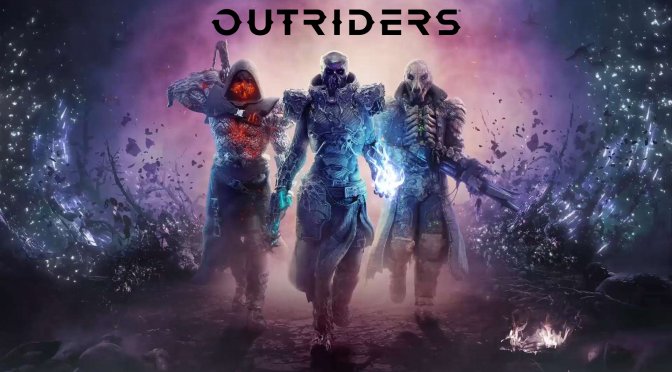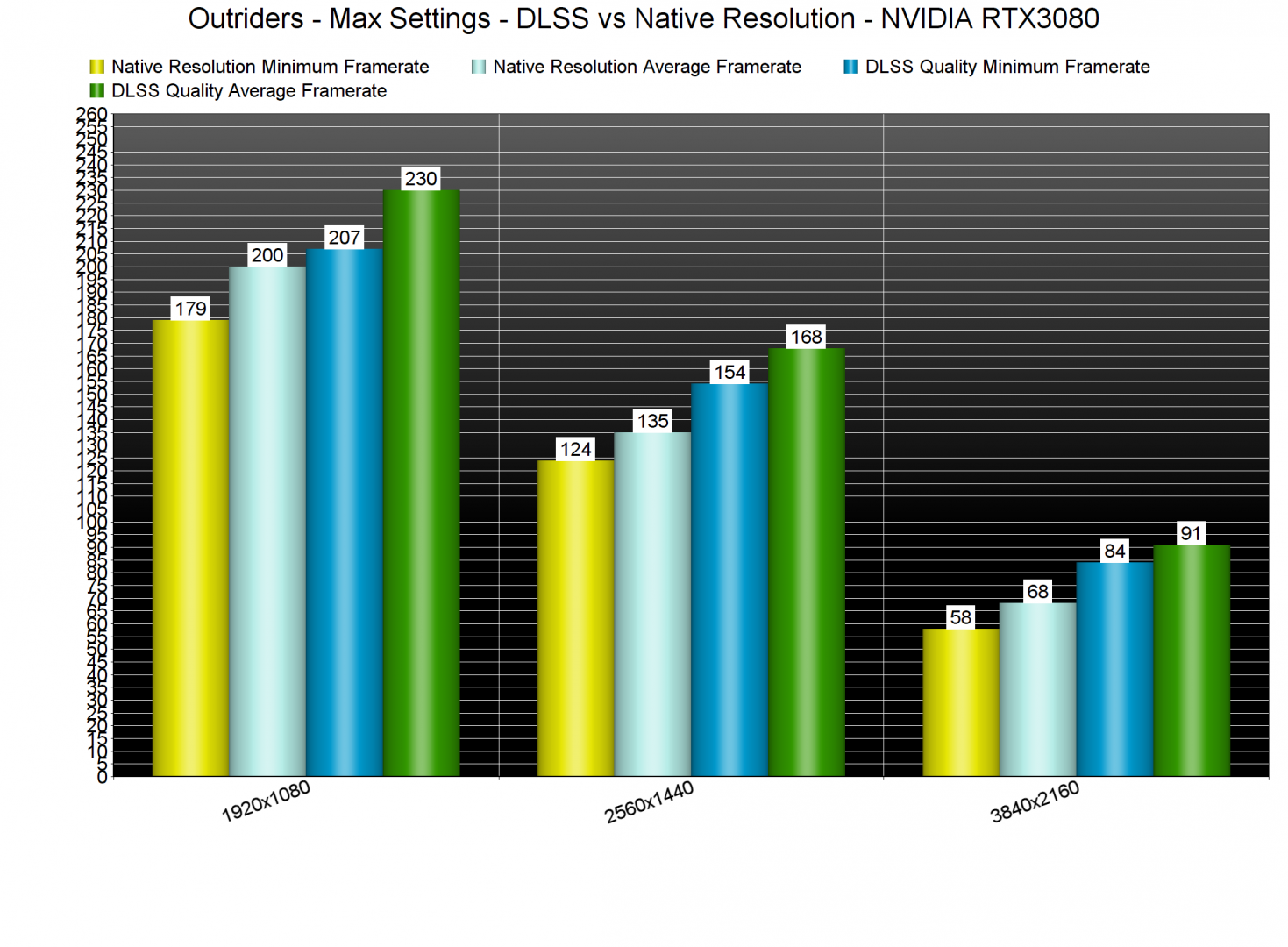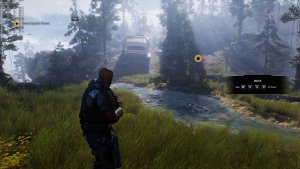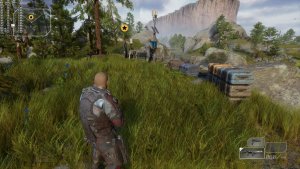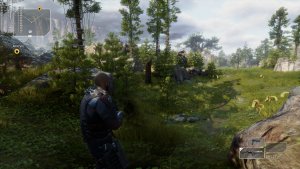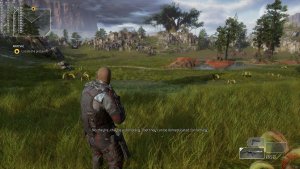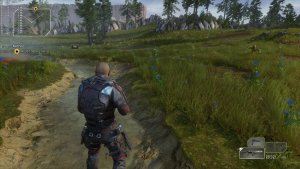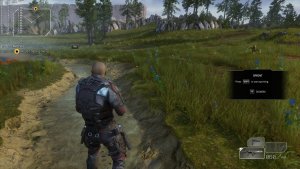Square Enix has just released Outriders which supports NVIDIA’s DLSS tech. As such, we’ve decided to benchmark its DLSS Quality setting and see how it compares against its native resolution.
For these benchmarks, we used an Intel i9 9900K with 16GB of DDR4 at 3600Mhz, an NVIDIA RTX 3080, Windows 10 64-bit, and the GeForce 465.89 driver.
At 1080p/Max Settings, we saw a 30fps improvement with DLSS. At 1440p/Max Settings, we also experienced a 30fps improvement. And at 4K/Max Settings, we witnessed a 23fps improvement. These numbers are excellent, but what about the image quality? Can DLSS compete with native resolution?
Below you can find some comparison screenshots between native resolution (left) and DLSS Quality (right). And, to be honest, there aren’t any major differences between them. Without zooming in, DLSS Quality looks just as good as the native resolution. In fact, some distant trees can look better with DLSS Quality (less aliased). I didn’t witness any DLSS glitches (like those in Death Stranding), though there might be in some later stages.
For what it’s worth, DLSS appears to be working wonderfully in Outriders, and we highly recommend using it. Thanks to DLSS Quality, the RTX3080 can run the game with more than 80fps at all times in 4K/Max Settings.
Our PC Performance Analysis will go live later this weekend, so stay tuned for more!

John is the founder and Editor in Chief at DSOGaming. He is a PC gaming fan and highly supports the modding and indie communities. Before creating DSOGaming, John worked on numerous gaming websites. While he is a die-hard PC gamer, his gaming roots can be found on consoles. John loved – and still does – the 16-bit consoles, and considers SNES to be one of the best consoles. Still, the PC platform won him over consoles. That was mainly due to 3DFX and its iconic dedicated 3D accelerator graphics card, Voodoo 2. John has also written a higher degree thesis on the “The Evolution of PC graphics cards.”
Contact: Email

